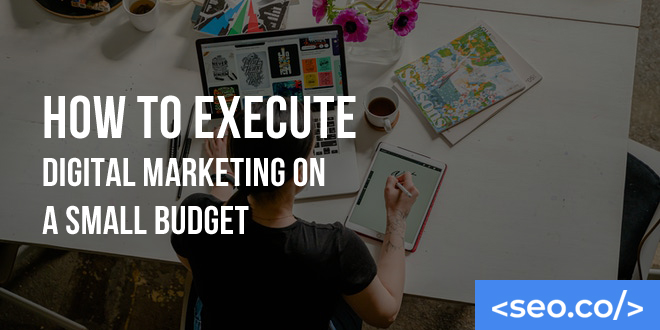When you think of ‘digital marketing,’ what comes to mind?
Is it splashy ads, viral social media content, online marketing and immersive website experiences?
Do you imagine billion-dollar businesses like Coca-Cola, Nike, and Apple flexing their creative muscles and spending millions of dollars on clever campaigns?
While high-rollers like these certainly have the advantage of a massive digital marketing budget, the reality is that you don’t need a six- or seven-figure pot of gold to generate results. Because if you’re willing to roll up your sleeves, work creatively, and focus on the right investments, small marketing budgets can generate pretty impressive returns.
In this guide, we’re neutralizing the mythical correlation between digital marketing success and dollars spent. Instead, we’re going to explore some of the top tips, strategies, and frameworks that are helping brands with limited digital marketing budgets reach customers and engage them in high-level ways.
If you’re ready to learn how we can get started!
Table of Contents
Cultivate The Right Mindset
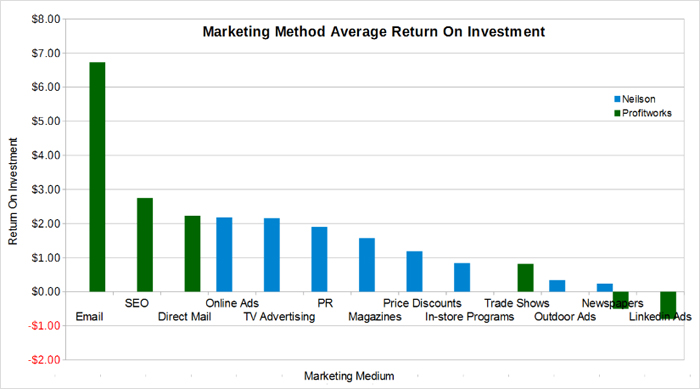
It might sound odd to begin a discussion of marketing strategies with mindset, but this is a very important concept. And once it’s grasped, you’ll discover much more freedom to invest your resources into the right channels and initiatives.
The problem most smaller brands have with digital marketing channels is that they see it as a one-off project. At first, this might not seem like an issue. But it has negative ramifications – especially for brands that don’t have a large marketing budget.
The correct way to view marketing activities is as an ongoing investment. Yes, each campaign and initiative has its own life, but you’re always feeding a long-term vision.
It’s best to think of your marketing campaign as a framework or foundation. It’s something that you’re going to continue to build on for years to come. And as is the case with any foundation in a building project, it needs to be sturdy if it’s going to serve its purpose.
Any brand can build a sturdy marketing foundation. The digital marketing budget is irrelevant. And just because you have a shallow budget today, doesn’t mean you won’t have more financial resources to invest in marketing in the future.
If you’re viewing marketing as a one-off investment today, you’ll end up constructing a cheap and flimsy foundation that won’t hold up under the weight of a more intensive marketing campaign down the road.
However, if you cultivate the right mindset and see the importance of creating a strong and scalable foundation that grows with you over time, you’ll be able to generate results regardless of the size of your marketing budget.
To put it even more clearly: Build a strategy that won’t be obsolete when you have a six- or seven-figure online marketing budget in tote. This doesn’t mean your marketing strategy will look the same – it just means it’s grounded with a strong foundation that can scale up and evolve with ease.
Develop a 12 Week Plan
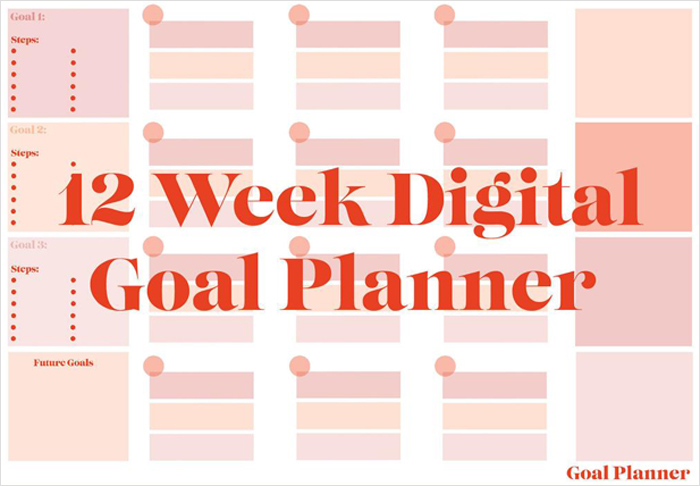
Before we dig into the very specific strategies you can use to generate results on a small marketing budget – including tips related to the content, social media, email, etc. – it’s important to touch on one more key element in relation to strategizing.
For years, annual plans and goals have been the measuring stick and framework within which businesses plan campaigns. But we’re going to encourage you not to use a one-year plan and to instead begin with a 12-week plan.
Planning in blocks of 12 weeks is a concept that bestselling author Brian Moran has popularized. It’s a goal-setting approach that’s rooted in the fundamentals of periodization (which is the process of focus, concentration, and overload in an athletic training environment).
The idea is that, by moving the goalposts in from 12 months to 12 weeks, you increase intensity and urgency. This simultaneously improves your chances of reaching the goals you set.
Annualized planning has been around for years, but it should no longer be a best practice (particularly within the context of digital marketing). When the annual plan was first introduced more than a century ago, businesses were able to look out three to five years into the distance and feel confident that nothing major would change. But as you know, we don’t operate in an environment like this any longer.
In the digital marketing space, trends and best practices are changing on a weekly basis. So why create a marketing plan that’s focused on one year out? A 12-week period of time is enough to help you generate results without eroding that much-needed sense of intensity and focus.
There’s nothing wrong with having an annual vision – or even a three-year vision – but it should always come back to a shorter time frame. And it just so happens that 12 weeks – or roughly a quarter of the year – provides the perfect structure.
6 Tips for Marketing on a Small Budget – 6 Steps For Allocating Your Digital Marketing Budget
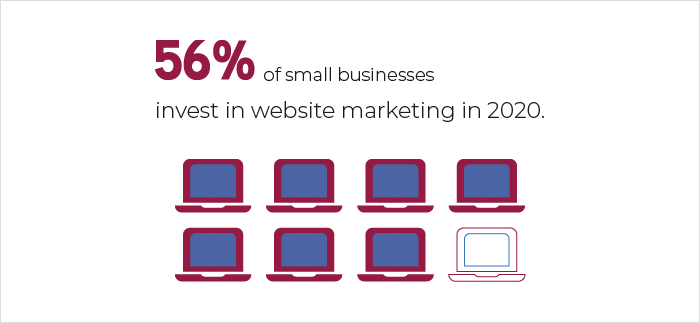
Now that we’ve discussed the importance of developing a strong and scalable foundation, as well as the need for campaigns and goals that have the right blend of intensity and focus, it’s time to get into the good stuff.
While it might be easier to be successful with marketing if you have a large online marketing budget, the constraints of a smaller budget can force you to emphasize the right principles. It basically takes away all of your crutches and forces you to get to work. And with that being said, here are a few specific tips you can use to generate more with less:
1. Create High-Value Content
While much has changed in the digital marketing space over the past decade – and much will continue to change in the near future – one thing remains true: Content will always be the king of marketing. And if there’s something that we’ve continued to learn about content, it’s that quality reigns supreme.
One of the biggest problems we see in our space is a rush to publish as much content as possible. Brands get caught up with lofty goals, like publishing 100 blog posts over the course of a year, when they should really be emphasizing quality first.
There may have been a time when quantity was the measuring stick, but that time has long since passed. Today’s search engines and internet users don’t give much thought to how much content you’re posting. What they really want is quality content that adds value.
If you can develop a high quantity of high-quality content, great! But it’s much more important to prioritize quality over quantity (particularly when operating within a limited marketing budget).
Not sure what constitutes high-value content? Here are some characteristics:
- High-value content provides tangible value that readers can use to address a specific need or want. (Think “how-to” rather than “informational.”)
- High-value content is evergreen in nature. This means it continues to provide value for several months or years.
- High-value content is usually in-depth and extensive. While there’s no word count requirement, there are usually several thousand words of copy.
- High-value content is digestible. Rather than using large chunks of text and dense paragraphs, the copy prioritizes breathability with lots of line spacing, paragraph breaks, subheadings, and visuals.
- High-value content leverages a variety of mediums, including a combination of text, graphics, images, and/or video.
It takes a lot of time to develop high-quality content that adds value, but what you’re left with is a powerful brand asset that you can leverage in a variety of capacities.
2. Emphasize One Social Media Platform
Social media is another place where quality matters more than quantity. (Again, this tends to get reversed.) Whereas most brands try to do everything at once – launching profiles on Facebook, Twitter, Instagram, Snapchat, LinkedIn, TikTok, Pinterest, and every upstart platform in between – this is rarely the best approach.
When you’re operating on a limited digital marketing budget, you have to be mindful of your resources. So why stretch yourself thin by focusing on half a dozen platforms at once? If you want to know the truth, you’ll get much better results if you focus on growing your presence and engagement on a single platform.
Spending five hours a week building up your brand’s Instagram account, for example, is going to do much more for you than spending one hour each on Facebook, Instagram, Twitter, Snapchat, and TikTok.
The platform you choose will be highly dependent on your niche and brand. For most B2C brands, Facebook or Instagram are good choices. For bloggers and creatives, a dual-approach with Instagram and Pinterest is acceptable. For B2B businesses or companies that sell services like tax preparation, financial planning, or insurance sales, LinkedIn is ripe for the picking.
Once you’re confident that you have high-level engagement and a loyal following on one platform, then you can consider adding a second one to the mix. But at the end of the day, it should always come back to quality. If adding second platform water down your ability to engage with followers on the original platform, you’re better off not pursuing it.

3. Practice Content Splintering
Resourcefulness is a must. If you’re operating on a limited marketing budget, we’re also assuming that you’re operating with fairly limited time. And one of the best ways to enhance your marketing is to practice something known as content splintering.
Content splintering – or fragmentation, as some call it – is the process of taking one piece of “cornerstone” content and spinning it into multiple pieces that can be leveraged across a variety of platforms and in numerous capacities.
This usually happens with high-value blog posts. For example, you might write a 3,000-word blog post that recaps the top home renovation trends for the year. You could then splinter this into a variety of other resources, such as:
- Use each of the images in your blog post as Instagram content.
- Turn the most insightful quotes and data points into tweets.
- Send an email newsletter where you highlight the post in bullet points.
- Record three or four different short-form videos where you discuss key trends.
If your original piece of content is developed with splintering in mind, the actual process of turning the post into different fragments is easy and can be done with relatively little time or added cost. You can think of it as the marketing version of recycling!
4. Invest in Video
Most brands assume they don’t have any way of investing in video as part of a low-marketing budget marketing plan. However, thanks to the democratization of video content over the past few years, it’s now possible for any brand to invest with a minimal financial cost.
For one, the hardware is attainable. Your smartphone most likely has a better camera than the majority of standalone cameras just a decade ago. You don’t need to go out and buy an expensive camera. Just use your phone! (There are also tons of awesome accessories that can take your quality to an even higher level. This includes ring lights, gimbal stabilizers, etc.
Secondly, the software is cost-effective and intuitive. No need to purchase a $1,000 program and spend six months learning how to edit footage. Just download a free/low-cost app and you can splice together footage, add subtitles, use filters, create transitions, and develop professional-looking videos in a matter of minutes.
Third, and most importantly, distribution and promotion are entirely in your hands. The “story” feature on platforms like Facebook, Instagram, and LinkedIn is very popular. We’d recommend starting there to gain some quick traction.
All it takes are two or three 30-second “behind the scenes” videos each day – with an occasional longer-form, edited video – and you’ll see your engagement improve.
5. Focus on the Long Term (Email)
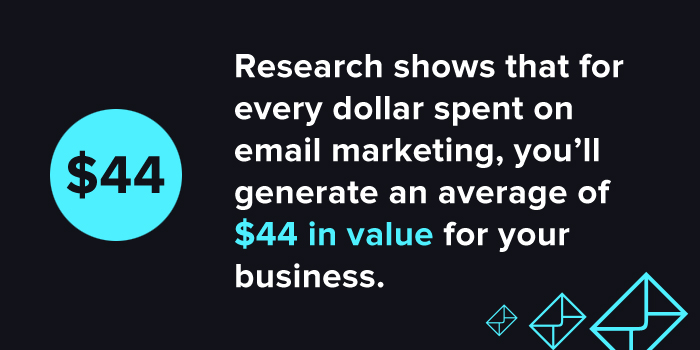
Most businesses want to focus on social media, guest posting, and other highly-visible elements of marketing. And while we certainly encourage you to emphasize these aspects using the strategies discussed in this article, you may be surprised to learn that there’s another element that’s statistically proven to generate better results. We’re talking about email.
Because of the influx of new modes of communication over the years – including SMS, direct messages, and apps like Slack – many smaller brands don’t realize that email is still the king of outreach and engagement. In fact, research shows that for every dollar spent on email marketing, you’ll generate an average of $44 in value for your business.
While it can take a while to build up an email strategy that works, now is the time to begin construction on this all-important element of digital marketing.
If you spend the next year aggressively pursuing email addresses and opt-ins from subscribers, you’ll be in a much better position to scale up your marketing in the future. Everything you do with blogging and social media should be centered on gaining subscribers. Then, once you have them on board, it’s time to nurture them with the occasional newsletter.
The key to successful email marketing is to not spend all of your time selling and promoting. Instead, consistently add value so that you can eventually tap your audience and call them to action when the timing is right.
6. Work With Micro-Influencers
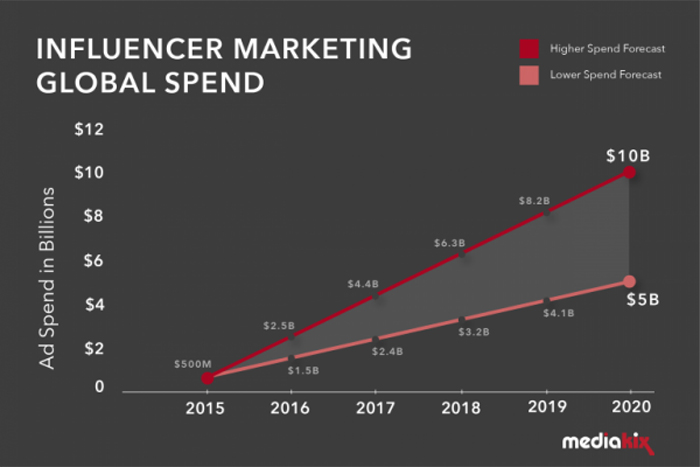
Influencer marketing is a big deal. But for smaller brands with limited budgets, partnering with celebrities like Kim Kardashian or LeBron James simply isn’t in the cards. However, there are still ways to leverage this powerful method of organic marketing. The key is to find and partner with micro-influencers.
A micro-influencer is someone who has a small but engaged following. (Small meaning somewhere between 1,000 and 10,000 followers.) They’re typically very well respected in a particular niche – such as sports, fashion, entrepreneurship, or technology – and have the ability to move their followers to action.
The great thing about micro-influencers is that they’re relatively inexpensive to partner with. Whereas a celebrity influencer can charge six- or even seven figures for a single post, 97 percent of micro-influencers charge less than $500 per post. (You can usually partner with 50 to 100 micro-influencers for the same cost as a single celebrity influencer.)
While you probably can’t afford to do weekly posts with influencers, a strategically timed promotion can accelerate a specific campaign or product launch.
Accelerate Your Results With SEO.co
Once you’ve started to flesh out the details of your own marketing strategy, you may reach a point where you need a little boost to your efforts. And at SEO.co, we have the resources to help you grow your brand’s online presence within the confines of any budget.
Content marketing, link building, and SEO…we don’t see these as separate investments. We believe that when brands enable them to work in harmony, organic and sustainable results happen.
Want to learn more about how we can help you scale your traffic with the highest quality content marketing and links? Give us a few details and we’d be happy to provide you with a free site assessment and discuss strategies we can use to generate exponential results with your marketing.
Tim holds expertise in building and scaling sales operations, helping companies increase revenue efficiency and drive growth from websites and sales teams.
When he's not working, Tim enjoys playing a few rounds of disc golf, running, and spending time with his wife and family on the beach...preferably in Hawaii.
Over the years he's written for publications like Forbes, Entrepreneur, Marketing Land, Search Engine Journal, ReadWrite and other highly respected online publications. Connect with Tim on Linkedin & Twitter.
- Google E-E-A-T: Google’s E-E-A-T SEO Ranking Factor - July 16, 2025
- SEO Audit Guide: The Complete Guide to Running an SEO Audit - July 11, 2025
- What is the Future of SEO in an “AI-Mode” World? - June 16, 2025

